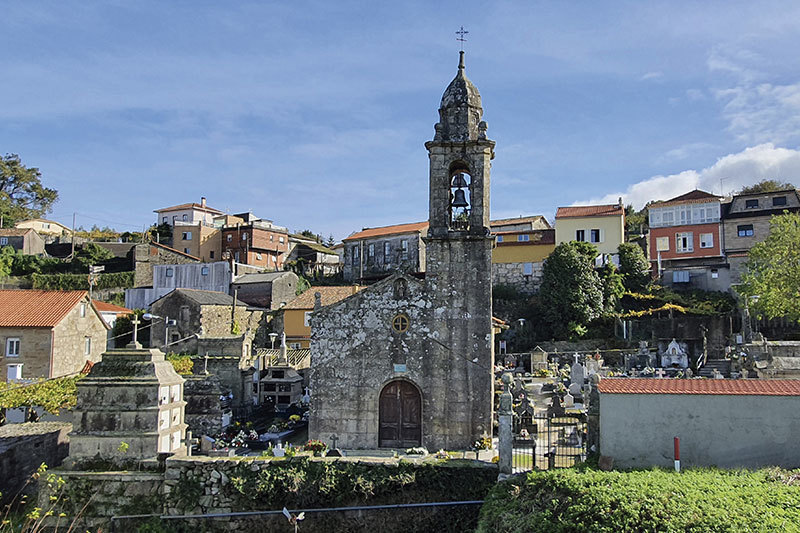Erected on the site of the old Celtic Castro, Castro Cessuris, it would be a parish church until 1893.
Its construction was completed in 1116, under the mandate of Archbishop Gelmirez, and although it still retains much of its original Romanesque style, it underwent numerous alterations.
The temple, made of ashlar, consists of a single rectangular nave, with a very sober interior and a wooden gabled roof.
On the outside of the southern wall, Romanesque elements stand out, such as the 12 corbels, among which two monster heads and a human figure sitting covering its attributes with their hands can be distinguished.
The cemetery is located, as in other churches in rural Galicia, within the enclosure of the atrium, forming a complex in which the parish of the dead and the parish of the living coexist.
Did you know that in the reform carried out in 1916, the two bells that crown the façade were added and, inside, different votive tablets dedicated to Jupiter and other Roman gods were found, which, today, are kept in the Museum of Pontevedra?
